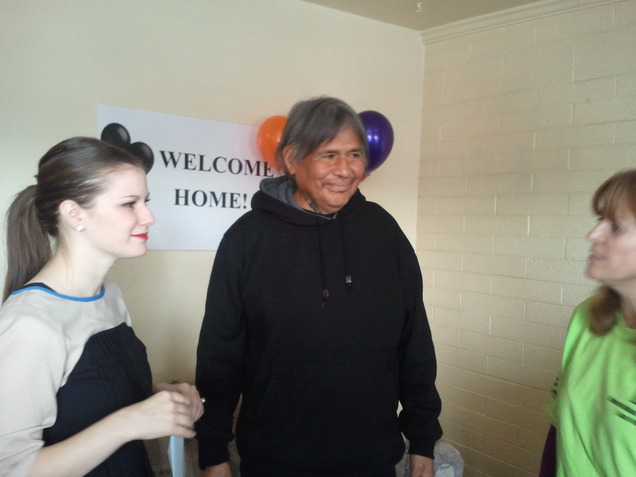This post is the third in a series about the elements of a coordinated assessment and housing placement system (CAHP). This post offers an overview of the navigation, case conferencing and housing referral process.
It’s an all too familiar situation for people experiencing homelessness: the staggering amount of paperwork, appointments, box-checking, and jumping through hoops required in order to access housing help. In many cases, just one inaccuracy or missed appointment can send someone to the end of the line, on their own again as they try to get back on their feet.
We all have a frame of reference here: navigating systems like the DMV, Medicare or the Social Security office, for example, can quickly turn into an unpleasant nightmare for anyone. Now, imagine trying to navigate those systems with no place to go home to at the end of the day, or no place to store the important documents necessary to the process. Under these circumstances, it’s easy to see how even the most resourceful and organized people could end up trapped in a bureaucratic system.
The truth is that help is often available for people experiencing homelessness, but too many remain trapped on the streets because the systems in place to assist them are fragmented, piecemeal and difficult to use. Even experienced case managers often admit trouble navigating the array of disjointed social programs on which their homeless neighbors must rely.
A successful coordinated assessment and housing placement (CAHP) system can help communities mitigate these bureaucratic pitfalls by providing housing navigation assistance to individuals or families experiencing homelessness. This assistance comes in the form of dedicated housing navigators–– well trained individuals familiar with local housing processes and requirements–– to provide step-by-step support to people who have been identified, assessed and added to a local, by-name list. Communities are finding that this intuitive position can often be filled by slightly shifting the roles of existing outreach workers and case managers.
The chief function of a housing navigator is to serve as the primary point of contact for an individual or family experiencing homelessness as they work their way through the housing process. Think of it as high quality customer service–– a navigator accompanies their homeless neighbors to housing related appointments and other necessary social service or benefit meetings and uses their in-depth knowledge of local systems to keep the process running smoothly. The ultimate goal of a housing navigator is to eliminate or lower bureaucratic hurdles so that people can move from the streets into housing as quickly as possible.
Documentation offers a simple example. From birth certificates to proof of military service, people experiencing homelessness must secure a variety of documents to move into housing, and these documents can often be difficult to acquire for those without the contacts or system knowledge to know how to get what they need. Experienced, well connected housing navigators can fast track the process by maintaining an updated list of local agency contacts and key documents required for each local housing and service offering.
But whatever the task before them, the guiding question for housing navigators must always be the same: “What would it take to help this individual or family escape the streets for housing?” If the answer lies within the navigator’s power to do, then he or she should do that thing.
Once a navigator has helped an individual or family collect all of the necessary materials and information they need to prove their eligibility for various programs, he or she can make a formal housing referral based on the information gathered during assessment. A housing referral should surface multiple options, so that an individual or family experiencing homelessness can choose the housing they most prefer, considering factors like geography, physical needs and pet accommodations. Following this choice, the lease up process can begin immediately.
Finally, it is important to note that the best navigation is done in conjunction with case conferencing–– a routine, centralized process that helps community leaders and housing navigators monitor and advance the progress of various people toward housing. If navigation is a way to connect people experiencing homelessness with trained advocates, case conferencing connects those advocates to each other so they can strategize around all of their homeless neighbors’ needs at once. The process also allows communities to translate individual data points into a bigger picture snapshot, enabling evaluation, troubleshooting and process improvement across the entire local housing placement system. To maximize the value of this snapshot, many communities have selected a single organization or point person to act as an “air traffic controller,” coordinating the work of all local housing navigators in real time.
Next week, we’ll conclude our CAHP blog series with an in-depth look at the final component of a system built for zero: data collection and communication. We’ll also be exploring the data tools being used by Zero: 2016 to drive results as we push on toward an end to veteran and chronic homelessness. Be sure to check back soon for more!
A Housing System Built for Zero Series:




